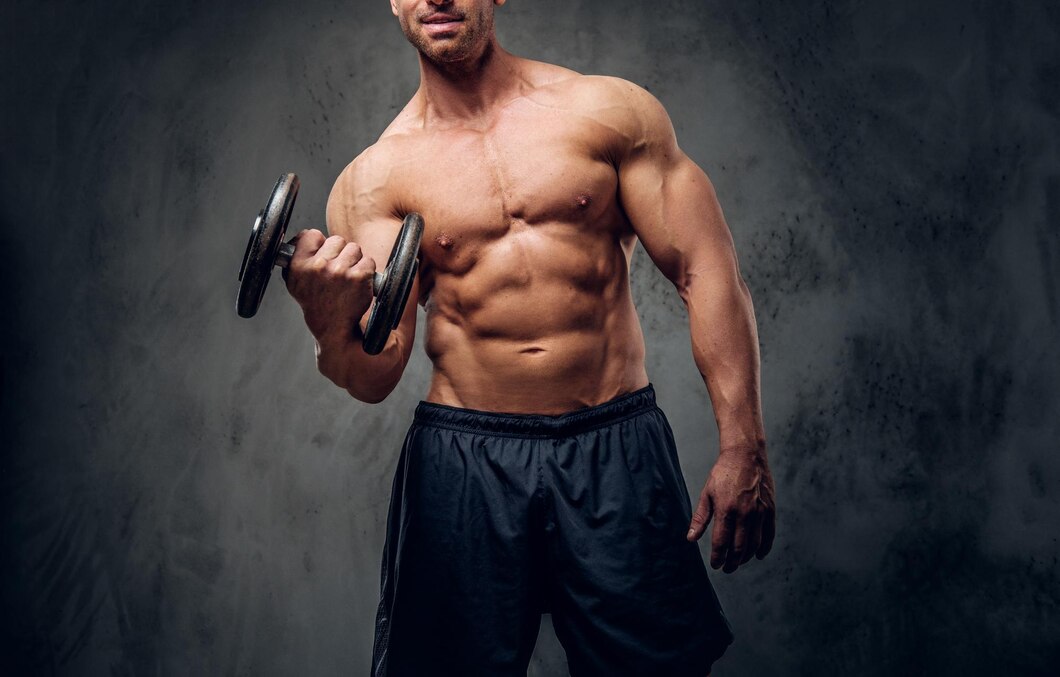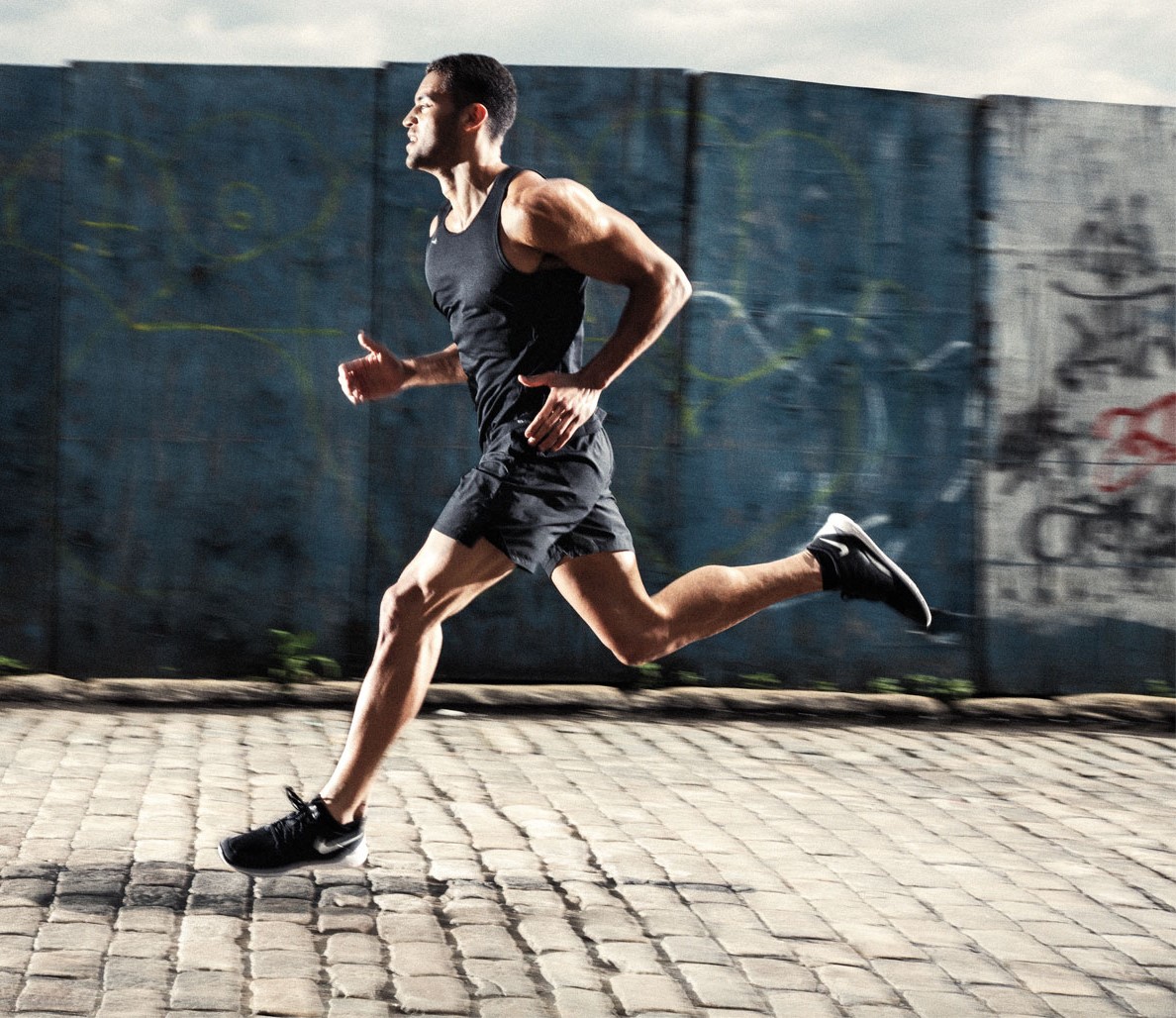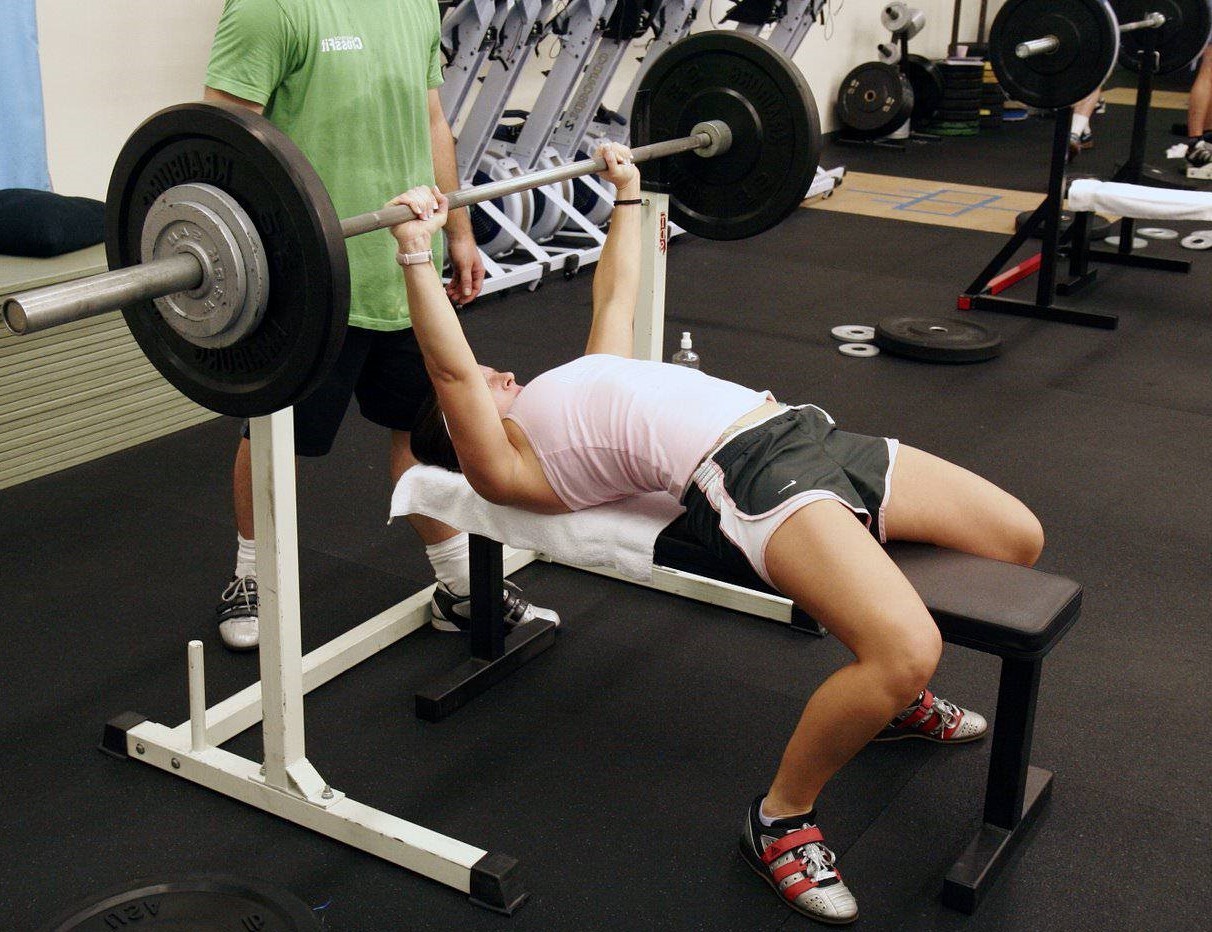If you’ve thought about setting up a gym to start powerlifting at home, but aren’t sure what to buy and look for – especially if you’re interested in powerlifting at home – then read on. This neat little guide will help you put together your own list of what you’ll need to start training for, and competing, in the sport of powerlifting – without requiring a gym membership.
Note that there are benefits to working out of a gym, especially a powerlifting gym specifically. The biggest benefit in my personal opinion is the energy of lifting weights around stronger training partners. This is especially true in powerlifting gyms where the top dogs are typically far stronger than the average gym-goer and usually stronger than anyone in any other nearby gym. The energy of lifting alongside and near people who are pulling hundreds of pounds more than you can be electrifying and help set the mood. These places also tend to be rather small and encourage each and every newbie to bring the best out of themselves. It’s a positive and fun environment, as long as you aren’t intimidated by the sound of plates clanging.
Even a commercial gym can be an empowering place to train
at. But not everyone is wired that way. Many of us just want to keep our head
down, eyes forward, and focus on the lift at hand – alone. Home gyms are
excellent for that purpose.
They’re also a great financial investment if the cost of getting to and from the gym, as well as the membership itself, ends up being prohibitively expensive in the long run, more so than the total cost of setting up your own place with refurbished or second-hand equipment. Finally, for some people, setting up a gym to start powerlifting at home is their way of putting money on the table betting on their own personal health and wellbeing. They’re making an upfront investment that will force their inner frugal self to start training. It’s like putting the sunk cost fallacy into good use when your internal motivation to just get in better shape isn’t enough.
But to set up your own little powerlifting gym at home, it’s
important to step back and remember what powerlifting is.
What is Powerlifting?
Powerlifting is a sport of three lifts, completed in a
single meet, with the goal of achieving the highest total in your respective
category or weight class. Each lift is given three attempts, and the heaviest
successfully lifted weight counts towards your final total. These lifts are the
squat, the bench press, and the deadlift, performed in that order.
Some hallmarks of powerlifting include the fact that it’s a relatively low skill sport (the majority of your ‘technique gains’ are made relatively quickly, and after that, you’re just fine-tuning for years), and that you’re given the choice between equipped and raw lifting. Raw requires the use of a thin singlet and socks but allows the use of a belt, wrist wraps, and knee sleeves. Equipped lifting further allows the use of a thicker singlet (with more support), a bench shirt (in certain federations), and knee wraps instead of knee sleeves. All powerlifting competitions ban deadlift straps.
The rules of each lift are quite simple. Deadlifts need to be completed without hitching, and in one smooth motion. The bench press requires a slight pause at the bottom, and you need to touch the bar to your torso. The squat needs to be performed with an adequate range of motion, which requires your hips to dip below parallel (relative to your knees).
Powerlifting is a single-player sport. As someone who appreciates video games, I see it as the difference between speedrunning a Mario game and playing Fortnite. Competitive multiplayer games can either be team games or 1v1 player-versus-player, but they’re ultimately about pitting your skills in direct conflict against someone else. Speedrunners try to compete with other speedrunners by achieving new records in games built around a single-player campaign but are really mostly focused on beating their own previous record.
You’re competing with yourself, first. Trying to beat your
own records, week after week. If you started this year with a 225-pound
deadlift, your goal for the next nine months might be to get to 315 pounds, or
405. Beating your own record is always the priority. And in the meantime, if
you can help someone else start their journey in this sport, then all the
better.
Powerlifting at Home
If you’re planning on training for powerlifting at home, you need all the equipment used at a powerlifting meet: a barbell, a variety of plates, barbell collars, a bench for pressing, a squat rack, and a deadlift platform (to save your floor).
You’ll also need equipment of your own. Most people opt for
a singlet, a powerlifting belt, and knee sleeves. To give yourself the option
of competing in all federations, buy IPF-approved equipment. The IPF tends to
be the most restrictive federation, and while IPF-approved equipment is pricier
than unapproved alternatives (they need to pay the IPF’s fees, after all), the
quality is good. Straps help when training deadlift volume, to save your grip
for the heaviest sets.
Many squat racks can be repurposed into bench stations, so a
simple, sturdy bench will do rather than a dedicated pressing station, which is
often pricier. Again, you can opt for IPF-approved bench and squat stations,
but you’ll be shelling out quite a lot of money. It’s better to stick to
IPF-approved lifting gear but opt for cheaper gym equipment.
For deadlifts, padding your floor is a must. Your gym should be in a garage or at least at the ground level, and you’ll want a makeshift deadlift platform of some sort. Rubber and plywood are usually key materials.
All powerlifting meets feature competition-specific barbells
and carefully calibrated plates, with a small margin of error (usually like
0.25 percent). Most federations in the world use kilo calibrated plates. These
are 1.25kg, 2.5kg, 5kg, 10kg, 15kg, 20kg, and 25kg plates, with a 20kg
calibrated stiff barbell. Some powerlifting federations use different barbells
for the squat, bench, and deadlift, notably American federations.
Deadlift barbells, like the Texas bar, are the most notable
exception in these federations, as they are much more flexible to allow for
greater flex in the bar as it’s being pulled off the floor. Some federations
also allow heavier 50kg/110lbs plates.
For all intents and purposes, I recommend just buying one simple 20kg (44lbs) stiff barbell, with a 28-29mm diameter. Kilo plates may be a little expensive depending on where you live, so you can opt for pound plates (typically, these are sold as 2.5lbs, 5lbs, 10lbs, 25lbs, 35lbs, 45lbs, and 55lbs). The diameter of the largest plate is important. The 45/55lbs plates should be 450mm (45cm) in diameter. That’s roughly 17.7 inches.
Notable brands that sell high-quality powerlifting plates include York, Ivanko, and Rogue. Since these are quite pricey when purchased brand new, you’ll want to keep an eye out for these brands when buying secondhand. You can, of course, just buy any old set of secondhand plates and weigh them yourself. You’re most likely not going to need specially calibrated plates when training.
Extra Goodies
Powerlifting is a simple sport, but there are many ways to
train the body for it. You’ll want to make sure you balance out your basic
compound lifts with a series of accessories and secondary lifts that address weaknesses
and avoid imbalances. There are also different tools and equipment to help make
the competition lifts tougher, most notably resistance bands and chains, which
change the resistance of the movement at different points in their range of
motion. Here are a couple of extra goodies if you’re powerlifting at home.
Squat Rack Attachments
Dip attachments, additional chin-up bars (for different heights), short or long pins – you name it. Some companies even get creative and offer really strange power rack attachments, like a glute-ham developer. If you use a squat stand rather than a squat rack then obviously these aren’t going to be very useful, but if you do have a squat rack, something you might want to consider purchasing or commissioning a welder to create a simple little dip attachment. It’s enough for powerlifting at home.
Resistance Bands
Resistance bands are excellent for supramaximal training
(overloading the top of the movement while allowing the bottom to get lighter,
letting you train with a heavier weight without having to move that load
throughout the whole range of motion) and speed work. They also add an extra
dimension of fun to classic accessory exercises like deficit lifts and pin
presses/squats. These are arguably at the bottom of the list, though, and never
really necessary for training (though they are pretty sweet).
Chains
Chains act much like bands do, providing a greater load at the top of the movement and getting lighter as the weight reaches the bottom. This way you can pull your usual weight off the floor or drop down into the hole in a squat with a lighter load, then fight to lockout.
However, because they’re not attached to anything except the
barbell, chains can add a touch of instability to the bar (especially in the
squat and bench press) and make it much harder to control the weight going up.
Chains are also useful for pullup and dip variations, where the same principle
applies (lighter at the bottom range of motion, heavier towards the top).
Weighted Belt/Vest
When you’re tired of hitting sets of 20 on the pullup bar or
the dip bars, it’s time to pack on extra weight – and I don’t mean through
food. While the old school solution of just filling up an old backpack with
weights or books is pretty decent, backpacks can only hold so much, and there’s
a cheaper alternative that’s more training-specific – a simple weighted vest.
They’re not too expensive and can make bodyweight exercises
much more effective as accessories as you get stronger and stronger. A weighted
belt (a belt with a chain for attaching plates) is even cheaper, and arguably
better, as the added weight forces you to address any instability that might be
causing you to swing excessively while doing pullups and dips.
Alternative Bars
The standard 20kg barbell is what all powerlifting
federations use to test an athlete’s bench press, squat, and deadlift. But
there are many alternative bars that can help powerlifters address weaknesses,
overload, or train in a way that helps carry over to the main lifts while still
providing new and fresh stimulus for hitting new PRs and getting stronger. Good
examples that are very popular among many different lifters include the safety
squat bar, the tsunami bar, and the football bar (for a neutral grip during
pressing accessories, like close grip bench pressing, overhead or incline
pressing, and bench pressing with a recovering shoulder).
Glute Ham Raise & Reverse Hyper
This is an expensive piece of equipment depending on where you might be getting it, but it’s arguably the single most useful “machine” you can pick up, besides just getting a rack, a bench, dumbbells, barbells, and plenty of plates. Consisting of a big pad and some ankle holds, the glute-ham raise machine or glute-ham developer is basically the king of supplemental posterior chain exercises, alongside the reverse hyperextension. On the surface, these are isolation variations of the good morning and the Romanian deadlift.
Glute ham raises aren’t particularly great for your glutes (reverse hyperextensions and weighted hip thrusts do wonders here), but they’re great hamstring isolators, and better than investing in a leg curl machine.
You can do the “poor man’s” glute-ham raise and reverse hyper, using a bench, an incline bench, or a sit-up bench, and some towels. For reverse hyperextensions, get yourself something higher than a bench like a tall box (the kind you’ll find in CrossFit gyms).
Skipping Rope
Ah yes, the boxer’s cardio tool of choice (next to the pavement, of course). Forget buying yourself a treadmill, and screw jogging (I personally hate it, and prefer to walk uphill or do sprints). Skipping rope is a great and simple way to get your cardio in quickly and get on with lifting. 3-5 minutes at the start of a training session, and an extended form of steady-state cardio at least once or twice a week is plenty enough to keep you fit, and skipping rope can help you break the monotony of jumping on a bike or going for a run every time you need to get some cardio done.
Sourcing Your Equipment
It’s much easier to buy equipment in some countries than it
is in others. Resellers who buy up equipment from closing gyms tend to have
pretty good deals, and you’ll find plenty of offers on classified ads like
Craigslist. You can typically equip your own basic starter home gym at a low
price in the US, although it’ll depend on your state and the number of gyms in
your area. Keep an eye out for gyms that are downsizing or closing, they might
be trying to get rid of a bunch of equipment.
In other countries, especially those where gym equipment isn’t produced but imported, building your own home gym is pure luxury. Even a basic barbell can cost you several hundred bucks in local currency, and we’re not talking about a Rogue bar. Then there’s the issue of space for powerlifting at home. Not everyone has a garage or an empty basement.
One of the main reasons I go to a gym is because it’s much, much, much cheaper than trying to set up my own home gym. The cost of a single barbell where I live is equivalent to about two years of membership in a comfortable, relatively close-by gym with a great atmosphere and air-conditioning. It’d be ridiculous to try and start powerlifting at home.
Powerlifting with Bodyweight?
As a final word to this article, I need to stress that the sport of powerlifting is quite simply the sport of lifting as much as you can within the parameters (rules) and lifts of the competition. You can train without having to power lift, and you can get stronger without powerlifting. There are ways to get bigger without powerlifting. You can be a healthy, strong individual without powerlifting, and by extension, powerlifting equipment.
However, you cannot train as a powerlifter without a barbell and weights. At that point, you’re either weight training or doing calisthenics. And that’s fine. It’s just not powerlifting. If you started reading this article because you were interested in knowing what you’d have to slap onto your wish list for a home gym, then I hope I’ve satisfied you with my answers. Otherwise, you’ll have to be okay with doing something that isn’t powerlifting (you’ll live), and eventually heading into a gym and getting started on barbells and weights. If you’re a powerlifter who can’t go to the gym right now (my condolences), consider an intense home workout to hold you over.




